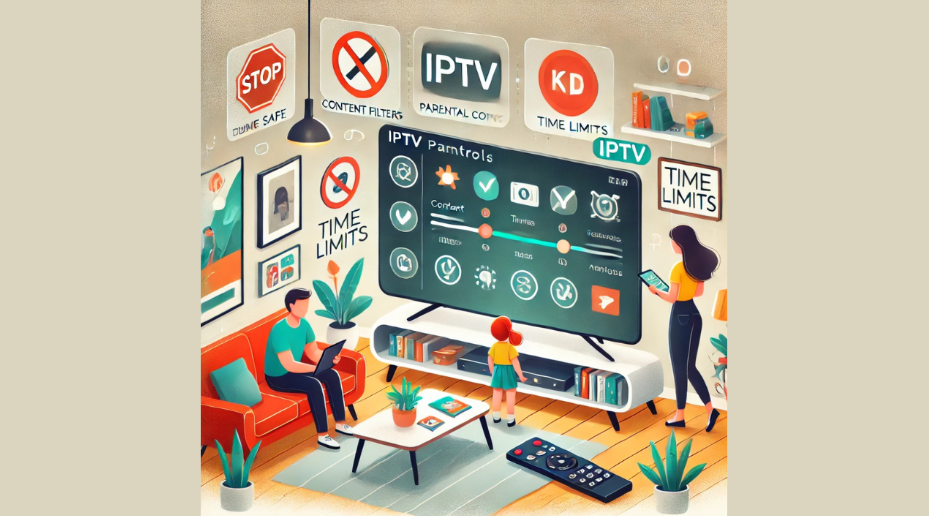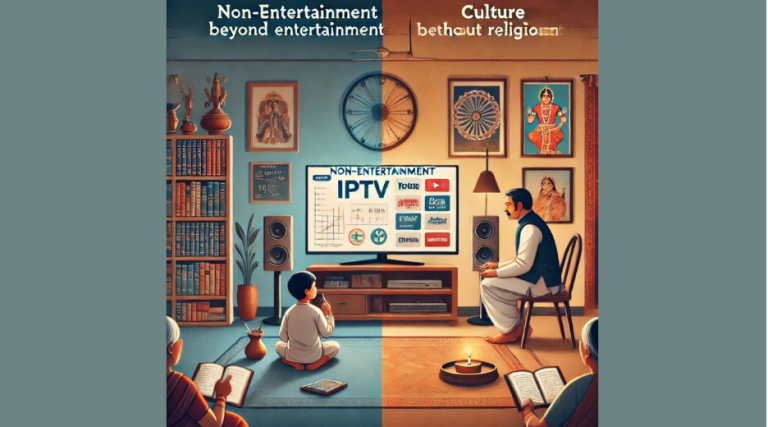IPTV Parental Controls: Keeping Content Safe and Age-Appropriate
As IPTV becomes a staple in homes across the globe, more families are tuning in to enjoy regional and international content with greater convenience. But with this increased access comes a growing concern: How do you ensure that children are only exposed to age-appropriate programming? That’s where IPTV parental controls come into play.
Also Read: Promo Daging Sapi Ekstra Marugame Udon Indonesia! Tambahkan Beef Sukiyaki hanya dengan Rp. 22.000
Platforms offering features like iptv for tamil channels are now integrating smarter parental control tools to empower parents, protect kids, and build safer digital habits. These controls are no longer just about content blocking—they are evolving into full-fledged content management systems tailored for modern households.
Why Parental Controls Matter in IPTV
Unlike traditional cable TV, IPTV offers a vast array of on-demand content, live programming, and access to global media libraries. This openness, while enriching, also means that without safeguards, children could easily stumble upon content meant for adults. From violent movies to inappropriate language or themes, the risks are real.
Parental controls in IPTV help families create a viewing experience that aligns with their values, cultural preferences, and the specific needs of different age groups in the household. With these controls, parents gain peace of mind, knowing they’re actively guiding what their children see and hear.
Core Features of IPTV Parental Controls
Parental control settings vary by provider, but the most trusted IPTV services offer a robust set of features that include:
1. Age-Filtering Settings:
Parents can filter content based on age ratings, such as TV-Y, PG-13, or R. This helps block shows and movies not suitable for younger viewers.
2. PIN/Password Protection:
Parents can lock certain channels or categories behind a password. This ensures that only authorized users can access restricted content.
3. Custom Channel Lists:
You can create personalized channel bundles for children. This may include only educational channels, kids’ shows, cartoons, and religious programming in regional languages.
4. Viewing Time Limits:
Many platforms now allow parents to set screen time rules—like restricting access after 9 PM or capping usage to 2 hours daily.
5. Activity Monitoring:
Some IPTV services keep logs of recently watched content, so parents can review what their children have been accessing and make adjustments if needed.
Regional Language Content and Cultural Sensitivity
For families seeking regional content—like Tamil or Telugu programming—parental controls play an added role. Certain shows or movies may be culturally rich but still contain mature themes. Being able to restrict access without eliminating exposure to native language content helps maintain a balance between cultural immersion and age-appropriateness.
For instance, while exploring iptv telugu channels, parents can allow devotional Telugu content or kids’ programming while restricting crime dramas or intense cinema. The goal is to keep children connected to their roots without compromising safety.
Setting Up IPTV Parental Controls: A Step-by-Step Overview
Here’s how most IPTV systems allow you to configure parental controls:
- Access Settings Menu:
Navigate to the system settings from the IPTV home screen. - Enable Parental Control Options:
Turn on the feature, and set a secure PIN. Never use obvious numbers like 1234 or your birth year. - Choose Restrictions:
Select age ratings, restrict specific channels, or hide categories entirely (like adult or horror genres). - Apply Time Restrictions:
If supported, define screen time windows—for example, no access after 8 PM on weekdays. - Save & Monitor:
Regularly update settings and monitor usage through logs or watch history.
Remember: Most IPTV providers also allow parental controls to be applied across multiple profiles, so each family member can have a custom viewing experience.
Also Read: Testosterone Enanthate for Beginners: Why Cypionate Is Popular
Encouraging Healthy Viewing Habits
Parental controls are most effective when paired with clear family communication. Talk to your children about what they’re watching, explain why certain content is restricted, and help them discover shows or educational programs they enjoy.
Set tech-free time zones—like during dinner or before bed—and use IPTV smartly as a shared experience, not just an individual distraction. These habits cultivate digital mindfulness and encourage critical thinking around media consumption.
IPTV Providers Leading the Way
Many IPTV services are evolving rapidly to make content safer for all age groups. Look for platforms that offer:
- Real-time content classification
- Regular updates to content filters
- AI-powered suggestions for age-appropriate material
- Profiles for children with curated libraries
- Regional-language customization
When choosing an IPTV provider, ask questions about their parental control capabilities, and test these features during your free trial or demo period.
Future of Parental Controls: AI and Smart Filtering
Looking ahead, IPTV parental controls are poised to become even smarter. With AI integration, systems will be able to analyze not just metadata or ratings, but actual video/audio content to determine suitability.
For example, AI could flag scenes of violence or suggest alternate programming in the same genre that’s safe for kids. These advanced filters will eventually go beyond language or region and adapt based on each household’s behavior and viewing history.
In multilingual homes, AI might even identify culturally sensitive content and warn parents ahead of time. This kind of personalization ensures IPTV continues to be a family-friendly tool, regardless of geography.
Conclusion
IPTV parental controls are a vital part of today’s digital household. They allow parents to stay in control of what their children watch while supporting cultural exposure through regional content like Tamil and Telugu programming. Tools such as channel locks, age filters, and screen-time restrictions help families create a healthy and safe viewing environment.
As IPTV platforms evolve, parental control features will become even more advanced, powered by AI and voice technology. But the core goal remains the same: giving families the power to protect, guide, and enjoy content together.
If you’re considering IPTV for your home, especially with young viewers, take the time to explore the parental controls available—and use them not just as a restriction, but as a tool to build better digital habits for the next generation.







